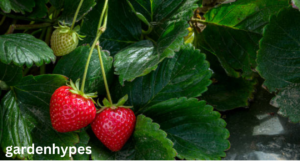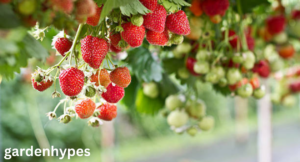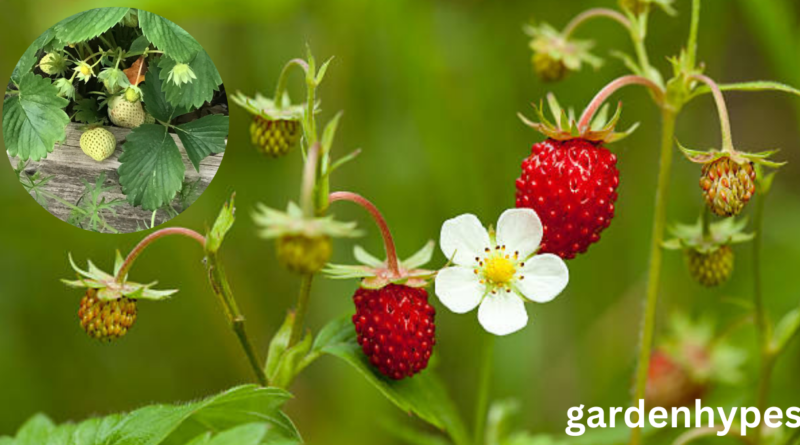What Does a Strawberry Plant Look Like
Introduction
When someone mentions strawberries, the first thing that comes to mind is the sweet, juicy fruit that we love to eat. But have you ever stopped to think about what the strawberry plant look like? Many people know strawberries as the bright red berries in a bowl or a dessert, but the plant has its own unique structure, beauty, and growth patterns. Understanding the appearance of a strawberry plant not only makes it easier to identify but also helps you grow and care for it properly in your garden. From its bright green leaves to its delicate white flowers and trailing runners, the strawberry plant is a fascinating mix of beauty and functionality.
In this guide, we’ll break down each part of the strawberry plant, how it changes with the seasons, and what makes it so unique. Whether you’re a gardener, a plant enthusiast, or simply curious about where your favorite fruit comes from, this detailed look will help you visualize and appreciate the strawberry plant in a whole new way.
click in link Winter Squash Varieties
Overview of the Strawberry Plant
Origins and History
The strawberry plant belongs to the Fragaria genus, which is part of the rose family (Rosaceae). Its history stretches back hundreds of years, with wild strawberries being enjoyed by humans long before cultivated varieties came into existence. Ancient Romans considered strawberries a luxury food, often using them in feasts and celebrations. Over time, selective breeding brought us the large, sweet, juicy strawberries that we recognize today.
Today, strawberries are grown worldwide—from small backyard gardens to massive commercial farms. They are one of the most popular fruits in the world, not only for their taste but also for their nutritional benefits.
Why People Love Growing Strawberries
One reason strawberries are a favorite among home gardeners is their compact size. Unlike fruit trees, which require years to mature, strawberries are small, fast-growing, and can produce fruit in their very first year. They don’t need a lot of space, making them perfect for containers, raised beds, or even hanging baskets. Plus, strawberry plants are visually appealing with their fresh green leaves, charming white flowers, and, of course, the bright red berries that add a pop of color to any garden.
Basic Structure of a Strawberry Plant
The strawberry plant may look simple at first glance, but it has several parts that work together to produce the delicious fruit we all enjoy.
Roots
The root system of a strawberry plant is shallow but widespread. Instead of growing deep into the soil, the roots spread out horizontally near the surface. This allows the plant to quickly absorb nutrients and water, but it also means that strawberry plants need consistent watering, especially during dry weather.
Crown
At the center of the plant lies the crown—a short, thick stem that sits just above the soil line. The crown is where the leaves, flowers, and runners all originate. It acts as the heart of the plant, storing energy and supporting new growth. If the crown is damaged, the entire plant can suffer, which is why gardeners take extra care not to bury it too deep when planting.
click in link Winter Squash Varieties

Runners (Stolons)
One of the most distinctive features of a strawberry plant is its runners, also called stolons. These are long, thin stems that grow out from the main plant and spread across the soil. At the tips of the runners, new baby plants, called “daughter plants,” begin to form. This is how strawberry plants naturally propagate, allowing them to spread quickly in a garden. Left unchecked, runners can create a dense patch of strawberry plants, which is great for ground cover but may require thinning if you want larger, healthier berries.
Leaves of the Strawberry Plant
Shape and Texture
Strawberry leaves are easy to identify. They grow in groups of three leaflets (a trait known as trifoliate leaves). Each leaflet is oval with serrated edges and a slightly rough, textured surface. The leaves are a vibrant green in spring and summer, helping the plant capture sunlight for photosynthesis. Their slightly fuzzy surface helps reduce water loss, making them surprisingly hardy.
Seasonal Changes in Leaves
In spring, new leaves emerge bright and fresh, standing tall on slender stems. During summer, the leaves become denser, providing shade to the crown and protecting the developing berries from sunburn. By autumn, the leaves may start turning reddish or brownish as the plant prepares for winter dormancy. In cold climates, the leaves may wither and die back, but the crown survives underground to regrow in the spring.
The leaves are more than just decoration—they play a crucial role in the plant’s survival. They regulate moisture, provide shade, and fuel the plant through photosynthesis. This makes them one of the most important features of a strawberry plant.
Flowers of the Strawberry Plant
Color and Size
Before the fruit appears, the strawberry plant produces small, delicate flowers. Most strawberry flowers are white with five petals, although some varieties may have pinkish blooms. At the center of the flower is a yellow cluster of stamens, which are essential for pollination.
Blooming Season
Strawberry plants usually bloom in late spring or early summer, depending on the variety and climate. June-bearing strawberries, for example, produce one large flush of flowers and fruit in early summer, while ever-bearing and day-neutral varieties bloom multiple times throughout the season.
click in link Winter Squash Varieties
Importance for Fruit Development
The flowers are more than just pretty—they’re the starting point of the strawberry fruit. Once pollinated by bees or wind, the flowers develop into green berries, which gradually swell and ripen into the juicy red strawberries we love. Without flowers, there would be no strawberries, making them a vital stage in the plant’s life cycle.

faqs
- How can I identify a strawberry plant in my garden?
Strawberry plants are easy to recognize once you know their key features. They have trifoliate leaves (groups of three leaflets) with serrated edges, delicate white flowers with yellow centers, and long runners that spread across the ground. The bright red fruits, of course, are the biggest giveaway. - How tall does a strawberry plant grow?
Most strawberry plants stay compact, usually growing between 6 to 12 inches tall. However, their runners can stretch out several feet across the soil, making them spread wide even though they don’t grow very tall. - Do strawberry plants come back every year?
Yes, strawberries are perennial plants. While the leaves may die back in winter, the crown and roots survive underground. In spring, new leaves and flowers emerge, and the plant continues producing fruit for about 3–5 years before it starts declining. - What time of year do strawberry plants bloom?
Blooming depends on the variety. June-bearing strawberries bloom in late spring, producing one big harvest in early summer. Ever-bearing and day-neutral varieties bloom several times throughout the growing season, giving you strawberries for months. - How do I know if my strawberry plant is healthy?
A healthy strawberry plant has lush green leaves, firm crowns, and produces vibrant flowers followed by berries. If you see yellowing leaves, stunted growth, or weak fruit, your plant might be struggling due to pests, disease, or poor soil conditions. Regular watering, good sunlight, and rich soil usually keep them thriving.
